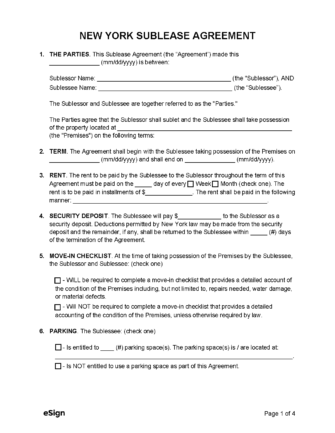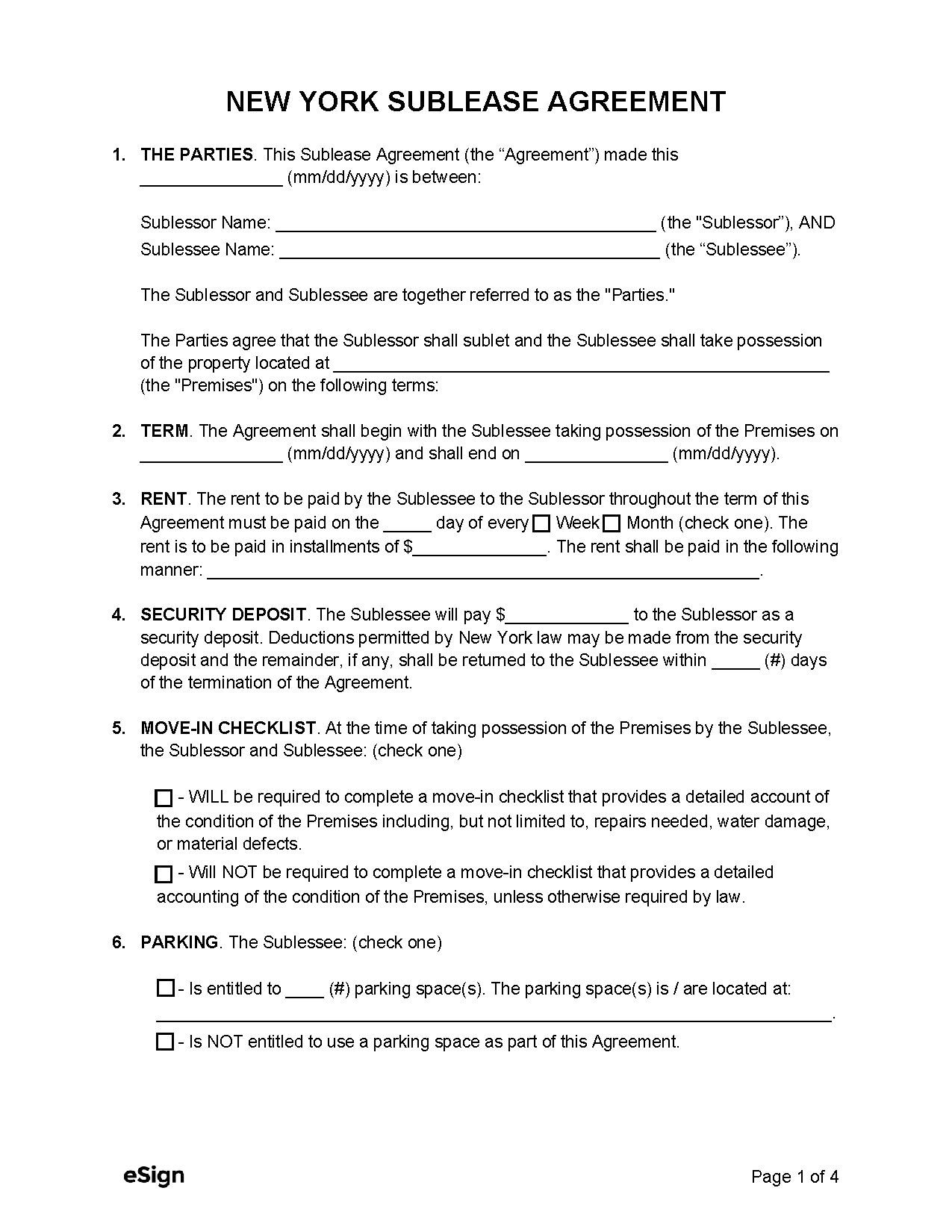
A New York sublease agreement is used by a tenant to rent their residence to a subtenant for a specified period. It outlines the details of the arrangement, including the rent, security deposit, and household policies. State law requires that tenants obtain their landlord’s consent before subleasing, though a request can’t be unreasonably denied in certain cases.
A New York sublease agreement is used by a tenant to rent their residence to a subtenant for a specified period. It outlines the details of the arrangement, including the rent, security deposit, and household policies. State law requires that tenants obtain their landlord’s consent before subleasing, though a request can’t be unreasonably denied in certain cases.
PDF Download
A New York sublease agreement is used by a tenant to rent their residence to a subtenant for a specified period. It outlines the details of the arrangement, including the rent, security deposit, and household policies. State law requires that tenants obtain their landlord’s consent before subleasing, though a request can’t be unreasonably denied in certain cases.
4.6 | 77 Ratings Downloads: 10,044
Right to Sublease – Tenants in buildings with four or more units have the right to sublease their unit with the landlord’s consent, which shall not be unreasonably withheld. [1] A request to sublet must include [2] :
Landlords must respond to the request within 30 days; failing to do so may be deemed as consent. [3] Landlords must give valid reasons to deny the request. Tenants who were unreasonably denied consent can still sublet, but they’ll risk a lawsuit where they must prove that the landlord acted in bad faith.
No Right to Sublease – For tenants in buildings with three or fewer units, landlords are not obliged to authorize a sublet request. However, tenants may end their lease with 30 days’ notice if a request to sublet is unreasonably denied.